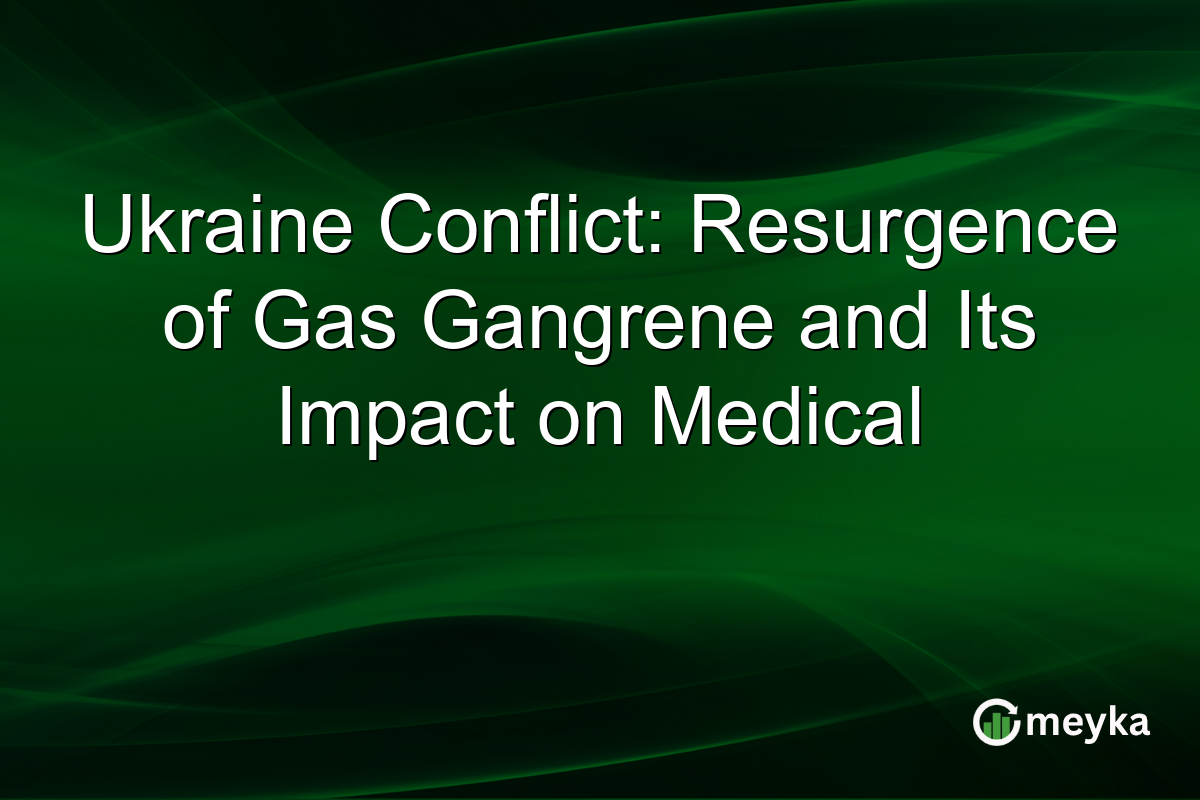Ukraine Conflict: Resurgence of Gas Gangrene and Its Impact on Medical
The ongoing Ukraine conflict has reignited concerns over a rare, but deadly, health issue: gas gangrene outbreaks. This condition has historically haunted war zones, especially during World War I. As Ukrainian soldiers grapple with this threat, the larger implications for military medical challenges become evident. The Ukraine conflict health crisis is further illuminated by these medical hardships, highlighting the intricate web of problems facing war-torn healthcare systems.
The Resurgence of Gas Gangrene
Gas gangrene, a bacterial infection that produces gas in tissues, has reemerged as a major issue among combatants in Ukraine. This bacterial infection thrives in war zones due to open wounds and unsanitary conditions, making the current conflict a breeding ground. Notably, Ukrainian soldiers are now dealing with this brutal condition, complicating treatment efforts due to battlefield disruptions. This resurgence highlights the need for advanced war zone healthcare solutions, designed to address such unique military medical challenges. “Ukrainian soldiers suffer from gas gangrene”.
Impact on Medical Infrastructure
The Ukraine conflict health crisis is severely straining medical infrastructure, with hospitals and medical facilities struggling to cope. As drone warfare complicates evacuations and logistics, treating severe conditions such as gas gangrene becomes increasingly challenging. Medical supplies dwindle, and the increase in trauma cases further burdens already stretched resources. The healthcare system is caught in a precarious position, seeking ways to address deteriorating conditions amidst continued conflict. The ripple effects are significant, affecting not only military personnel but civilian healthcare too.
Challenges in War Zone Healthcare
Military medical challenges are formidable, especially in active conflict zones like Ukraine. The difficulty in evacuating injured soldiers, combined with the scarcity of medical staff, exacerbates the health crisis. Furthermore, the war zone’s unpredictability affects consistent medical deliveries and treatment plans. These circumstances demand innovative solutions and international cooperation to enhance on-ground medical support. The cycle of conflict and health struggles presents a grim reality for those on the frontlines, necessitating urgent and collaborative action.
Final Thoughts
The resurgence of gas gangrene in Ukraine symbolizes more than just a medical anomaly; it underscores the profound impact of conflict on healthcare systems. With soldiers and civilians alike caught in the crossfire of warfare and disease, the challenges extend beyond immediate medical treatment to involve broader systemic issues. Addressing the Ukraine conflict health crisis requires a multifaceted approach, focusing not only on immediate medical needs but also on restructuring war zone healthcare infrastructure. By learning from these clear challenges, stakeholders can work towards more resilient health systems, even amidst turmoil. Continuing to innovate and collaborate will be key in mitigating future crises and maintaining healthcare stability.
FAQs
Gas gangrene is a severe bacterial infection that causes tissue death and gas production. It’s often fatal if not treated quickly. This condition is common in war zones due to open wounds and unsanitary conditions.
The conflict has strained Ukraine’s healthcare infrastructure, complicating the treatment of severe conditions like gas gangrene. Medical supplies are low, and battlefield conditions impede effective treatment and evacuations.
Addressing these challenges requires international cooperation, strategic logistics, and innovative healthcare solutions. Enhancing medical evacuations, ensuring supply chains, and supporting medical staff are crucial steps.
Disclaimer:
The content shared by Meyka AI PTY LTD is solely for research and informational purposes. Meyka is not a financial advisory service, and the information provided should not be considered investment or trading advice.






